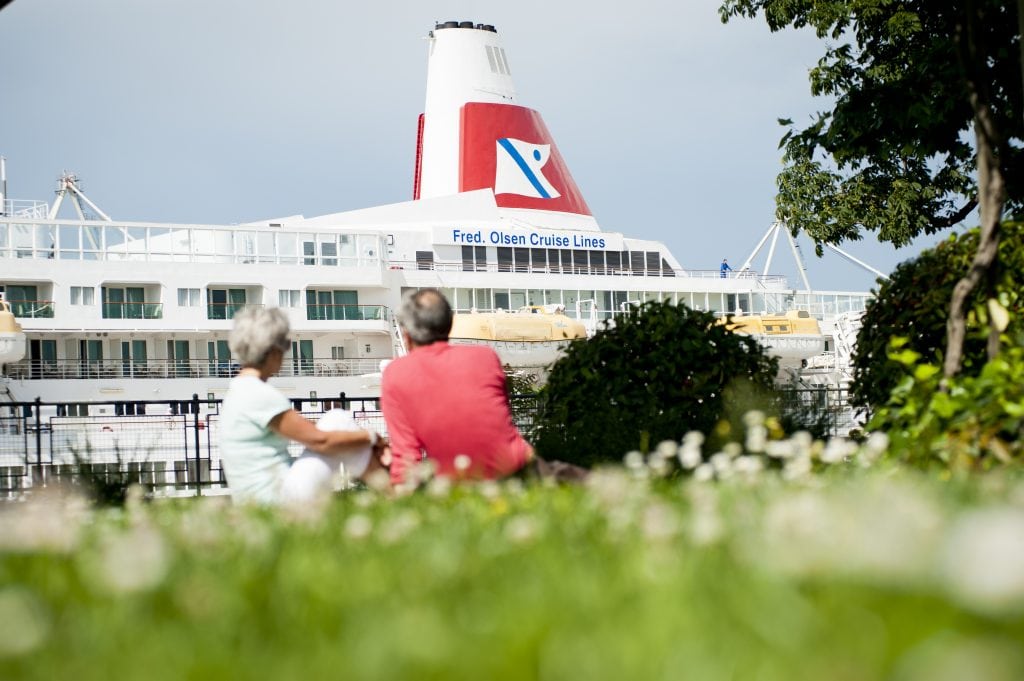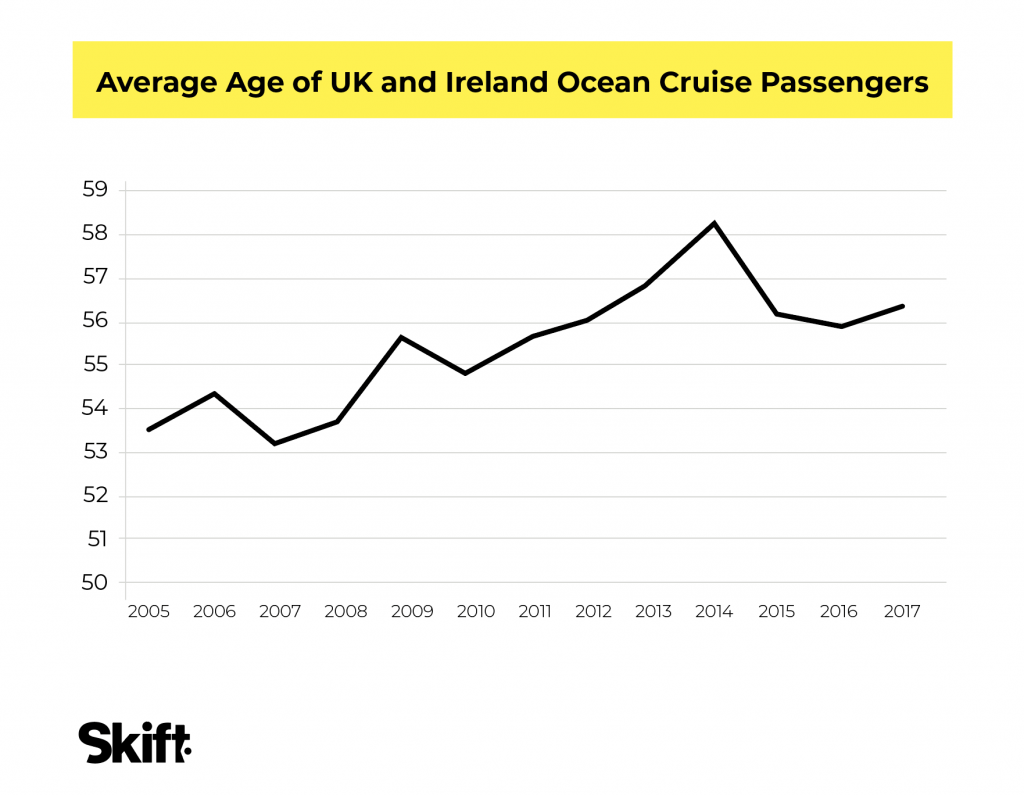Skift Take
While some cruise lines have had success targeting younger travelers, it is older people who are still the most interested. But so what? There are plenty of wealthy retirees who are happy to while away their days sipping cocktails at sea.
For years, the cruise industry has tried to shake off the tag that the only people interested in heading out on the water are the “newlywed, overfed, and nearly dead.”
To counter that narrative, cruise lines have launched ships aimed at the lucrative family market and turned their attention to that most sought-after commodity: the millennial traveler.
All this has prompted some pretty bold claims that cruising is no longer just for the elderly. But despite the cruise industry spending more of its marketing dollars targeting younger people, the average age of passengers is actually rising in one of its biggest markets.
In the UK and Ireland last year, the average age of ocean cruisers edged up from 55.9 to 56.3, continuing a long-term trend that has seen the figure creep up over the past decade.
 Source: CLIA UK and Ireland and the University of Brighton
Source: CLIA UK and Ireland and the University of Brighton
It’s perhaps even more of a concern for the industry that the percentage of total cruise passengers between the ages of 26 and 34 has stayed exactly the same every year from 2007 to 2016 at 4 percent and the 35-44 age group has actually seen a reduction – from a high of 11 percent in 2006 to 6 percent in 2016 (CLIA UK and Ireland did not use the same age breakdown in its 2017 report).
What’s interesting about these figures is that they are very different than the other big cruise markets. In China, the average age in 2016 was 44 and in North America — which includes the United States, the single biggest source market by far — the average age in 2017 was 46.
Why the Difference?
So why are cruisers in the UK and Ireland a decade older? There are plenty of potential reasons.
Jennifer Holland, a doctoral researcher at the University of Brighton who covers the cruise industry, points out that there are plenty of ports within an easy driving distance where cruise lines focused on the older market such as Saga and Fred. Olsen have extensive itineraries.
The UK also benefits from repeat passengers and the cruises themselves are of a longer duration than those in the U.S. Both of these factors skew the average age upwards.
“It is unusual that although several cruise lines have invested a great deal of effort and money into attracting millennials and younger families, and while these groups are beginning to cruise more than previously, the average age of UK cruisers remains much older than other markets and needs further investigating to explain this trend,” said Holland.
“The older average age of UK cruisers is most likely a result of the UK cruise market maturing with more repeat cruisers, as research shows repeat cruisers tend to be older than first time cruisers.”
Then there’s the idea of what millennials are actually looking for when it comes to a holiday and whether cruises are able to fulfil this need.
The idea of living like a local and looking for unique experiences does not go hand in hand with a two-week cruise where thousands of people eat in the same restaurants and go on the same excursions.
“Research points to how in the UK perceptions still persist that cruising is for ‘older people,’ with stereotypes persisting here in the UK more than elsewhere, and my own research in the UK last year found that many younger people and non-cruisers see cruising as superficial and sedentary, and doesn’t match how they see themselves,” Holland said.
“In the UK, there is still a lot of classism associated with cruising, particularly with the heritage branding of Cunard and P&O, and probably to a lesser degree also the resurgence of class cruising with NCL’s ‘Haven’, Cunard’s ‘Grills’ and Genting’s ‘Palace.’”
Although the there’s been a general upward age trajectory for UK and Ireland cruisers, it has fluctuated in recent years and is down slightly from a high of 58.2 in 2014. Holland said this could be down to the introduction of shorter and more diverse itineraries.
A Problem or an Opportunity?
At the moment, a rising average age isn’t necessarily a concern for the UK and Ireland cruise industry because overall numbers are still growing. Last year passenger numbers hit a record high of 1.97 million, up 4.3 percent on 2016.
And as we’ve written before, in Europe, North America, and elsewhere, the baby boomer generation is doing very well financially, meaning that those over the age of 50 have the money and the freedom to go on cruises.
“In the UK and Ireland we have an aging population which has slightly increased the average age. On top of this, the over-50s are travelling more, and later in life, than at any other time in our history. They are in a strong position economically, and many cruise lines are targeting this demographic,” Andy Harmer, CLIA UK & Ireland director, said.
“However, at the same time others are specifically aiming to attract younger guests, families and multi-generational groups travelling together.”
The issue is a long-term one. How much more growth can the industry squeeze out of a mature market, especially with new ships coming into the market at such a rapid rate?
The cruise industry’s determination to target a younger demographic might also be having the opposite effect to what it intended.
“At the end of the day, cruise operators are more inclined to attract older customers (as they are increasing and have more time and money), while projecting a youthful image to attract them,” said Alexis Papathanassis, Professor of Tourism Management and Information Systems at the Bremerhaven University of Applied Sciences in Germany.
So, the cruise industry might not be able to persuade millennials to get onboard — but is doing a good job with their parents.
The Daily Newsletter
Our daily coverage of the global travel industry. Written by editors and analysts from across Skift’s brands.
Have a confidential tip for Skift? Get in touch
Tags: cruise, millennials
Photo credit: Fred. Olsen Cruise Lines' Boudicca ship, pictured in Slovenia. The average age of a UK and Ireland ocean cruise passenger increased in 2017. Fred. Olsen Cruise Lines

 Source: CLIA UK and Ireland and the University of Brighton
Source: CLIA UK and Ireland and the University of Brighton